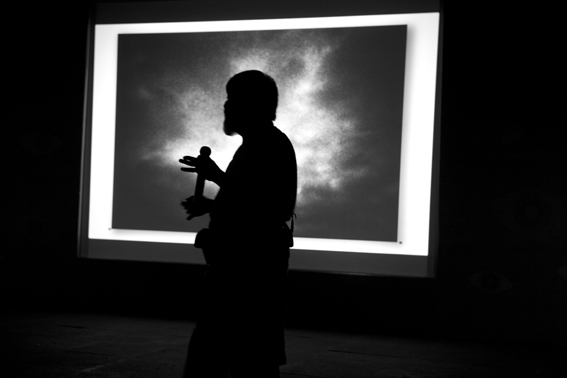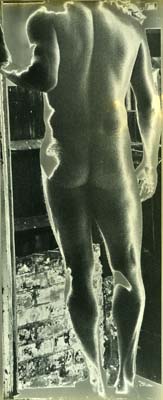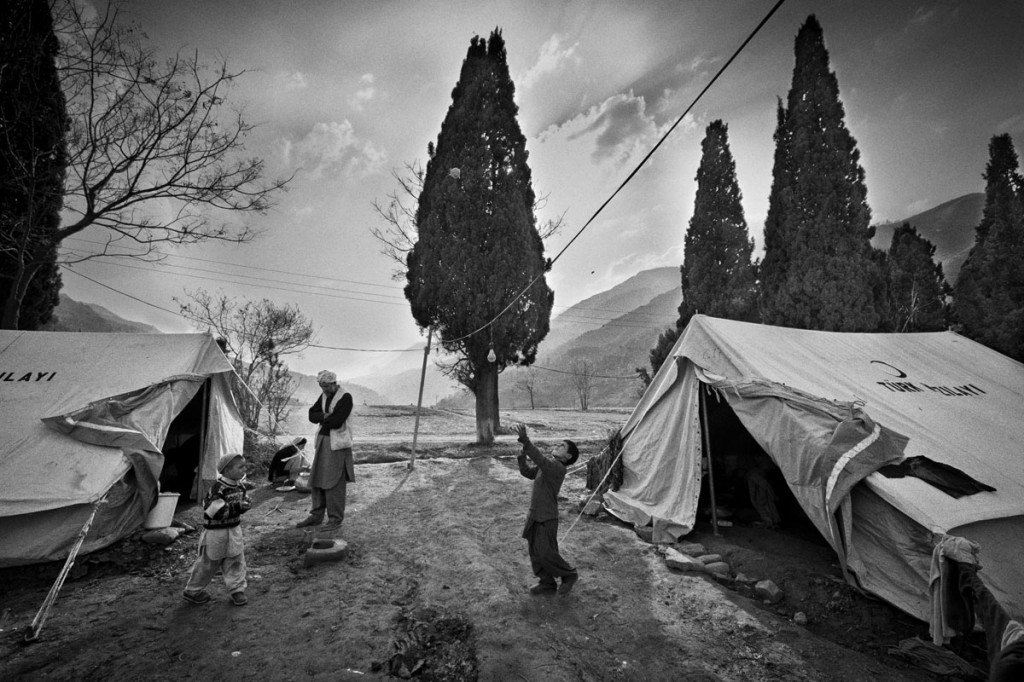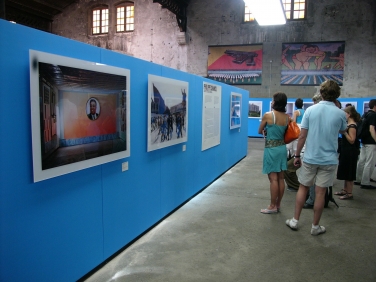They were professionals I respected and admired, but they had found my comments disparaging. ?What about the work we?ve been doing all these years?? they had hurtfully said. I had reflected upon the fact that while there were some great photographers in India, it didn?t really have a photographic movement. Until now.

Whenever I passed through Delhi, Raghu, Pablo, Dayanita, Prashant and other photographer friends would all meet at the India International Centre and try and kick start this movement. ?Karne hoga yaar? (we?ve got to do it mates) was the rallying cry we would leave each other with, but while several initiatives had been taken, it was the Delhi Festival, launched in October 2011, that showed the first signs of that collective endeavor.
It was the 18th December 1998. The day Pathshala was launched. Indian photographer Saibal Das had taken me aside to quietly ask, ?is this the ?real? Reza?? I had nodded and he went on ?can I touch him?? Reza Deghati, the famous National Geographic photographer, chuckled when I explained. We all paused as Saibal approached – and touched – his idol.
It took me back to 1991, when Fred and Wendy Baldwin had walked me through the exhibition spaces in Houston. I had never been to Fotofest or any other festival, but listening to Fred and Wendy, I could see myself surrounded by images and image-makers.
Arles was my first festival. Mexican photographer Pedro Meyer and I had known each other for many years, but we had never met. I barely survived the crushing hug at our first encounter. The joy of seeing outstanding work all across the city. Stunning multimedia displays on the giant Amphitheatre. The excitement of walking amidst household names in photography, seeing, sometimes touching, my heroes, made me realise this was a feeling that had to be shared. I wish I could have taken a suitcase full of photographers with me to these festivals. I settled for two. In a subsequent trip to Arles, we stopped on the way in Paris and Abbas, the chairman of Magnum, took my two young colleagues Shehzad and Mahmud on a guided tour of the agency. I recognized that glazed look in their eyes.
Meeting Raghu Rai on a boat from Hong Kong to Kowloon. Lunch at Chelsea with Raghubir Singh, Sunil Janah and Ram Rahman, courtesy of Max Kozloff. Working with Dayanita Singh, Eugene Richards and Mark Abraham in my first curatorial assignment, have been seminal moments in my own photographic career. I remembered the high I got from each of those encounters. This was a high that needed to be shared. I needed a very large suitcase. If the photographers couldn?t be taken to the festivals, the festivals would have to come to them. So Chobi Mela was born. That was 1999.
Little had we realized what an electrifying effect this festival would have. Photographers who came over, went back energized and set up their own festivals. Besides the Chinese mega events, small intimate festivals took place in Singapore, Malaysia, Cambodia and Thailand. India however, was still lagging behind. That was when Prashant Panjiar and Dinesh Khanna stepped in. They weren?t foolhardy youngsters, and a great deal of thinking and planning went into staging this important event.
When asked why Delhi Fest became such an instant success, Prashant would in his typical manner respond ?it was because Dinesh and I are not superstars?. ?While I certainly dispute his non-superstar status, I know what he was getting at.? Prashant and Dinesh were going to make the festival a success and not let their egos get in the way.? As brave people do, the duo had some luck on their side. It was ambitious to take on such a diverse programme on their first attempt. The choice of the magnificent grounds of the Habitat Centre, was key to making it work. I am sure a lot went on behind the scenes to make it happen. The Amphitheatre, the classrooms, the open air space and the splendid location were central to creating the atmosphere of the special event
Fine shows, interesting talks, the organic mix of the experienced and the new, combined with ambitious curatorial projects, made it seem it was a festival run by old hands.? I am sure there were cracks, as there always are, but whatever might have gone on behind the scenes, the show on stage went without a blip.
For me, it was the camaraderie between the photographers wafting throughout the festival that made it particularly special. My lasting memory – of the inevitable photo op -with Raghu Rai, Pablo Bartholomew, Prashant Panjiar, Prabudhdha Das Gupta and I, will forever linger. Prabudhdha is no more, but what these fine photographers have together built, will I am sure, outlast them all.
Shahidul Alam
Dhaka
September 2013
Tag: culture
The Gift of Photography
By Joe McNally

Is one that is given, or accepted, freely. As a shooter, you can be the recipient of many gifts over the years: The grace of someone?s time, the whimsy of their expression, the fleeting emotion of their eyes the lens traps, forever.
Behind the lens, you are a gift giver as well. You honor someone?s humanity, beauty, or spirit. You wordlessly transact, and that transaction, fixed in pixels, becomes the stuff of memory. Nobility can be enhanced, or conferred, upon someone who has never been so recognized. If done properly, at least occasionally, what transpires within the mundane mechanics of a shutter clicking or a light flashing becomes a certain kind of poetry, the legend of both the subject and the shooter. When the house is burning down, and all the people and the pets are out safely, what does someone often save? The photo album. Continue reading “The Gift of Photography”
Return to Arles
|
by John G. Morris |
 |
|||
|
Arles is the mother of all photography festivals. It was founded 37 years ago by photographer Lucien Clergue and two other Arlesiens. Lucien was recently elected to the Academy of Fine Arts at the Institut de France, the first photographer to be so honored.
In 1980 I went to Arles to project the work and the words of W. Eugene Smith. You could have heard a pin drop in the great old Roman amphitheater. After we moved to Paris in 1983, my wife Tana and I went to Arles almost every year, the last time in 2002 when the great Czech photographer Josef Koudelka took over the town. Thereafter, it seemed, Arles to me was overshadowed by the photojournalism festival at Perpignan called Visa Pour l’Image.
|
||||
Chobi Mela talks
Some of the highlights of Chobi Mela VII presentations
Pablo Bartholomew (India) in conversation with Munem Wasif and Shahidul Alam Continue reading “Chobi Mela talks”
Change the world, one photo at a time.
2013 PhotoPhilanthropy Activist Awards

A stone crasher worker. Jaflong, Sylhet, Bangladesh. January 18, 2008.?Photo: Khaled Hasan/Drik/Majority World?MWC000752
THE ACTIVIST AWARDS ? next submission period opens October 1, 2013
The PhotoPhilanthropy Activist Awards?identify outstanding work done by photographers in collaboration with nonprofit?organizations worldwide and awards prizes ranging from $2,000-$15,000. In previous years, work was submitted on behalf of 435 nonprofit organizations from 88 different countries. Continue reading “Change the world, one photo at a time.”
Using the power of photography: SDN Announces Call for Entries
The Big Picture
Winners: National Geographic Traveler 2013 Photo Contest
On May 10, 2013?The Big Picture?featured some of the thousands of images that were entered in the 2013 National Geographic Traveler Magazine Photo Contest. The winners have been chosen. Their images follow. (The winners gallery is also available?here?as well as the complete contest and all its entrants?here. You can see the editor’s picks and can download wallpaper images for your desktop or your smartphone.) The winning images will appear in the Dec. 2013/Jan. 2014 issue of National Geographic Traveler magazine. (NOTE:?The captions are written by the photographer.)?–EDITOR’S NOTE: The Big Picture will post again on Wednesday, August 7.?(11 photos total)

I was in Manaus, Amazonas, during the Brazilian Aquathlon (swimming and running) championship. I photographed it from the water and my lens got completely wet, but there was so much energy in these boys that I just didn’t worry about that.(Photo and caption by Wagner Araujo/National Geographic Traveler Photo Contest) Continue reading “The Big Picture”
Meta-narrative: Fred Ritchin on the future of photojournalism
By Fred Ritchin in British Journal of Photography
Establishment Earthquaker
?By Manik Katyal Emaho Magazine
Emaho got into a free-wheeling t?te-?-t?te with the legendary award-winning Bangladeshi photographer, Shahidul Alam to pry beyond his politics
Manik: In all your past interviews, you have mentioned how photography happened to you, so I will not ask that question, but what is photography for you? And your relationship with politics?
Shahidul: I am a very political animal and the reason I took up photography was because of my political position. Being concerned about the social situation in my country and globally, I happened to stumble into photography and discovered what a powerful tool it was; which happens to be the only reason why I practice it. I am fond of photography, I enjoyed images but at the end of the day that for me is not the point of the exercise. I continued to use photography in whatever way I can. Largely because, I see the strength of the medium and I recognise the potential. Having said that I think ? I have said this before ? that if tomorrow it ceases to effective, I?ll have no qualms about giving it up and taking something new.

Continue reading “Establishment Earthquaker”
Wresting the Narrative From the West

Most people today do not live in Europe or North America, or have white skin. Yet the world’s economy and media are dominated by a handful of Western countries, and the reporting on developing nations is not always done by people who know their subjects well. Continue reading “Wresting the Narrative From the West”



